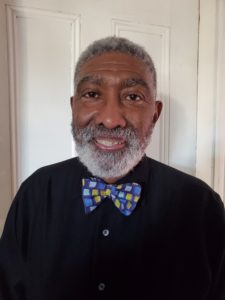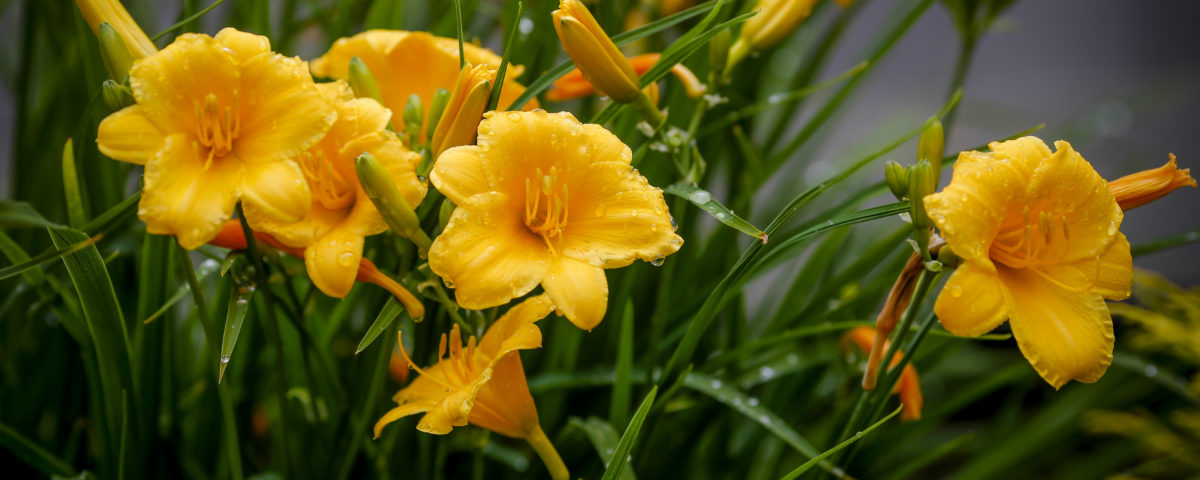Jasper Lawson has a gentle and easy laugh that brightens the end of almost every sentence he shares. During conversation, it is virtually impossible not to join Jasper in joyful smiles because he creates a welcoming environment that makes every moment feel totally alive and complete. His infectious spirit may be the best kept secret at IMS; since retreats are silent, it is likely that many have missed the opportunity to experience Jasper’s total enthusiasm for life. So, for those who have not yet had the pleasure to meet Jasper before or after a retreat, we offer a short profile of this happy meditator, psychologist, amateur botanist, IMS donor, and champion of good will toward all.
of almost every sentence he shares. During conversation, it is virtually impossible not to join Jasper in joyful smiles because he creates a welcoming environment that makes every moment feel totally alive and complete. His infectious spirit may be the best kept secret at IMS; since retreats are silent, it is likely that many have missed the opportunity to experience Jasper’s total enthusiasm for life. So, for those who have not yet had the pleasure to meet Jasper before or after a retreat, we offer a short profile of this happy meditator, psychologist, amateur botanist, IMS donor, and champion of good will toward all.
Jasper, when did you first discover IMS?
My first retreat was about 12 years ago with Gina Sharpe and Sharon Salzberg. I went through a period of personal reflection and a friend recommended IMS. It was just what I needed. At the end of my first retreat, Gina told me about the people of color (POC) retreats. And I am a person of color — African American. So, I showed up for that and it sort of snowballed from there. Between 2005 and 2017, I sat 12 retreats for people of color; in 2008 I attended a course at BCBS (Barre Center for Buddhist Studies) on Buddhist psychology; in 2009 I sat with Larry Rosenberg; and then there was the 2019 “Love and Rage” retreat with Lama Rod Owens. I still struggle with day to day formal practice but IMS has been a wonderful experience for me for many years.
What do you remember about your first retreat at IMS?
I drove from Boston and when I left the highway, it was like I entered a special forest. I arrived at IMS to find this quiet, peaceful environment. People were friendly and welcoming so I was not anxious about what was going to happen to me. This was all part of my continuing search for who I am and how I can be the most ethical, compassionate person that I can be. Also, I’m a therapist so I talk to people a lot. The idea of having a week of silence was pure gold.
Over the years, have you noticed any significant changes in your life that you attribute to the retreats you have done at IMS?
I credit IMS with helping build my capacity to be more present in relationships with other people. Also, for increasing my openness and compassion for the experiences of others and for their differing points of view. I think of seeing someone who is really in distress or angry with me, and being able to step back from that and not be reactive. Instead, I can choose to be calm. And curious. And more reassuring.
Has meditation helped you professionally?
I’ve been a clinical psychologist for 35 years now so I kind of bring that wherever I go. My job requires introspection. And I have a wealth of experience with a wide variety of people from all kinds of environments and emotional states. Usually the most difficult stuff I see is related to greed, hatred and delusion. Mindfulness techniques help. Deep breathing. Relaxation. One of the techniques that has become very popular in my field is the three-minute meditation. When a person is in an aroused state, I have them do focused breathing and relaxation until they can calm down. For people I see who are already meditators, meditation is integrated into the therapy. We start with a short or long meditation period and then go into the talk therapy.
You mentioned the IMS retreats for people of color. How have those retreats supported your practice?
For me, it’s a way of connecting with people of color and our shared experiences. The last people of color retreat (2019) was very impactful. In one sense it was a divided group, with many new people and many old (returning) people. It was an experience of the diversity in diversity and that is sticking with me. These retreats are also about IMS’ commitment to having the broad range of humanity represented in the group. I’ve been with a lot of organizations and social groups with various ideas about how to “do” diversity. IMS walks the walk. From 2005 to 2020, I just look at the increase in the number of people of color attending retreats. I look at the people of color in the Teacher Training Program. I’ve got a perspective over time and nobody else is doing it like IMS.
You are not only a frequent retreat participant, but also an IMS donor and long-term volunteer. What drives you to donate your time, money and energy to this organization?
Once a retreat ends, it’s kind of hard to extend the walls of IMS. So, one way I extend is by serving as a volunteer. I come back and do gardening work and that allows me to interact with the staff in a different context. We share meals and conversation. It’s a very pleasant experience (except for the mosquitos and black flies at certain times of the year). The garden at IMS has a life of its own. And the woods are sprawling with all kinds of natural, wonderful things. One of my fantasies is to have a horticulturalist or botanist come out and catalog everything.
It’s not mysterious why I volunteer and donate materially. I believe in the basic mission of IMS — to increase compassion, peace and inclusion in the world. And I like flowers and gardens. I was born in Columbia, South Carolina, and my grandparents were farmers on both sides. I spent a fair amount of time as a kid on my grandfather’s farm. My father used to plant a vegetable garden every year, as well as flowers and shrubs. I belong to the Nature Conservancy; I’m a long-term member of the Audubon Society; and I’ve done volunteer work for the Sierra Club pulling up weeds in California and other places. So, this is a way of contributing and doing something that I enjoy.
After all of these years meditating at IMS, what have you learned about yourself?
That I’ve got my baggage and I have to be aware of what my baggage is. At IMS I am expanding the process of my own growth. Working on being a less reactive person. Making more intentional choices. It’s not going to get resolved in this lifetime. But having that insight is a lot. All of my interests come together and get integrated at IMS.



